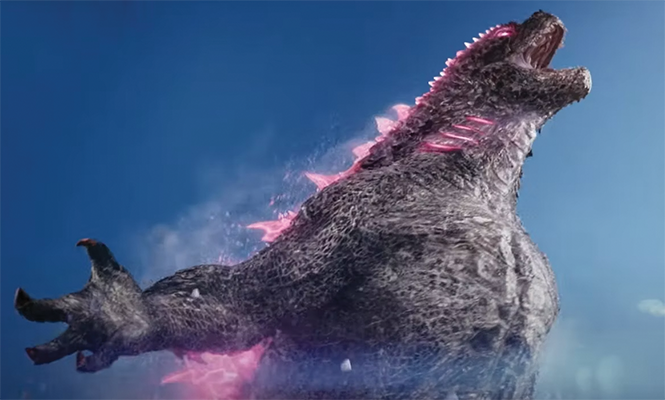Reflections on the Godzilla movie history
Making movie monsters great doesn't mean making them real.
By Scott Renshaw @scottrenshawIt probably sounds like a kind of self-mythology for a film critic to suggest that some of the first movies he fell in love with as a kid were foreign films. In this case, however, it's the truth—because the films in question were the English-dubbed versions of Japanese kaiju adventures, beginning with Godzilla.
A lot of things were different about the world where I grew up, in 1970s suburban California, long before the internet, streaming services or even video stores placed near-infinite viewing choices in easy reach. My family was an early adapter to cable television, largely so that we could get the independent Los Angeles stations after our move to Bakersfield. Those stations filled their broadcast hours with local Southern California sports teams, reruns of TV shows like I Love Lucy and The Twilight Zone ... and plenty of old movies.
Most of those old movies held little interest for a grade-schooler, but the kaiju movies—Godzilla, Gamera, Ghidorah, Mothra and the like—were perfect fodder for a budding nerd. Yes, they were filled with leveled cityscapes, but even at that age I could tell that the cityscapes were scale models. They were great cheesy fun, and at their best when they set two or more of the monsters in opposition, like my personal favorite, Destroy All Monsters. I understood nothing about the allegories for nuclear age anxieties in post-war Japanese culture, but I fluently spoke the language of people in big rubber suits going smashy-smashy. Before Star Wars, before comic books, before any other media, the Toho kaiju were my gateway drug to loving fantasy spectacle.
You'll understand, then, if I feel somewhat possessive about what has happened to Godzilla over the years. Even in childhood, I immediately rejected stuff like the Hanna-Barbera animated Godzilla series that introduced the bumbling Godzooky, and I later approached with intense skepticism the attempt by Hollywood to appropriate the character, beginning with Roland Emmerich's 1998 feature. I've rarely returned to re-watching the big-rubber-suit movies of my childhood, but they've always been in my heart. And these newer movies were ... something else.
It took the release of Godzilla Minus One last year for me fully to latch on to what that something else was. Decades had passed since I was a kid binge-watching monster movies on a 14" TV screen, but I recognized immediately that thing I loved. Those circa-1960s movies were spectacles, and they were disaster movies, but they were safely silly; like a roller-coaster, they allowed you to experience danger in a way that was non-threatening. It's not that Godzilla Minus One wasn't also a solid piece of storytelling, because it did work on that level as a narrative about the futility of Japan's own particular World War II-era culture of war. The action, however, was a deft mix of modern technology and an aesthetic that made Godzilla, that atomic force of nature, still feel like a guy in a rubber suit.
This week marks the release of Godzilla X Kong: The New Empire—a continuation of a franchise reboot that has been going on for a decade now, since Gareth Edwards' 2014 Godzilla, and has folded King Kong into its universe. Some of these movies have been okay, some of them not-so-okay, and some of them actively terrible, but all of them have operated on the same misguided principle that the way to make Godzilla appealing in the 21st century is to make the monster's world more real. That notion could apply to the trauma experienced by the characters, or to the physical devastation of the locations where the monsters get crazy, or to the look of the creatures themselves. CGI has given birth to a default assumption that what audiences want is hyper-realism, for the visual effects to render a physical world indistinguishable from our own. And that feels like it misses the point of the kaiju movies entirely—that they're set in our world, but only a scale model version of that world built specifically to be trampled by people in rubber suits.
As of press time, I've not yet seen Godzilla X Kong, and I always hope for the best when approaching any as-yet-unseen movie. I worry, though, that this Godzilla will continue to not be my Godzilla, the Godzilla whose distinctive sing-song roar has lived rent-free in my head for nearly 50 years. I don't need that Godzilla to be real in order to be special.
More by Scott Renshaw
-
Film Reviews: New Releases for April 26
Challengers, Boy Kills World, Humane, Alien 45th anniversary
- Apr 25, 2024
-
CHALLENGERS feature movie review
Zendaya centers a romantic triangle with a unique relationship spin
- Apr 24, 2024
-
Film Reviews: New Releases for April 19
The Ministry of Ungentlemanly Warfare, Abigail, The Beast, Hard Miles, Sasquatch Sunset and more
- Apr 19, 2024
- More »





